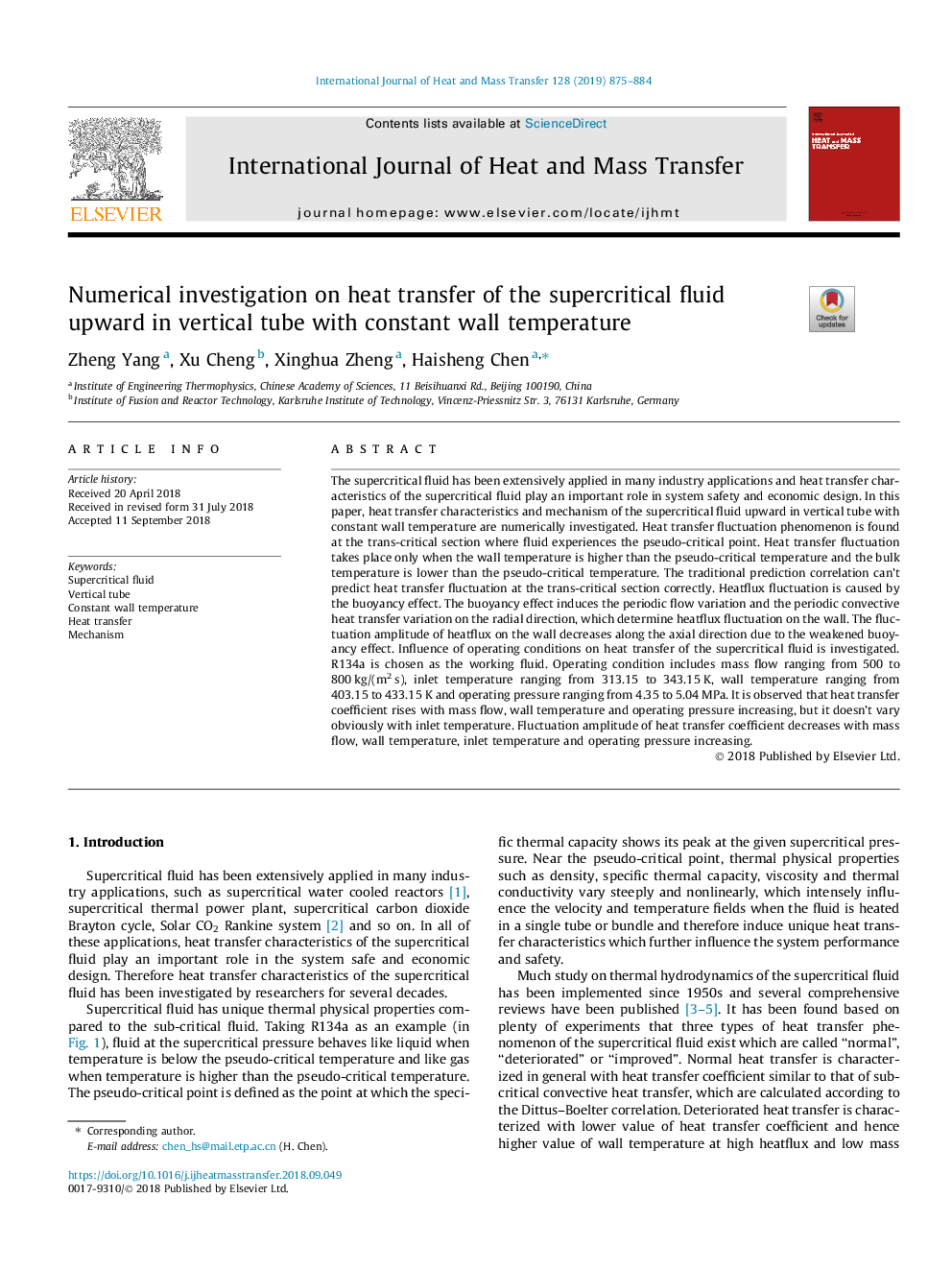| کد مقاله | کد نشریه | سال انتشار | مقاله انگلیسی | نسخه تمام متن |
|---|---|---|---|---|
| 10139983 | 1645984 | 2019 | 10 صفحه PDF | دانلود رایگان |
عنوان انگلیسی مقاله ISI
Numerical investigation on heat transfer of the supercritical fluid upward in vertical tube with constant wall temperature
ترجمه فارسی عنوان
بررسی عددی انتقال حرارت مایع فوق بحرانی به سمت بالا در لوله عمودی با دمای ثابت دیواره
دانلود مقاله + سفارش ترجمه
دانلود مقاله ISI انگلیسی
رایگان برای ایرانیان
کلمات کلیدی
مایع فوق بحرانی، لوله عمودی، دمای دیوار ثابت، انتقال گرما، مکانیسم،
موضوعات مرتبط
مهندسی و علوم پایه
مهندسی شیمی
جریان سیال و فرایندهای انتقال
چکیده انگلیسی
The supercritical fluid has been extensively applied in many industry applications and heat transfer characteristics of the supercritical fluid play an important role in system safety and economic design. In this paper, heat transfer characteristics and mechanism of the supercritical fluid upward in vertical tube with constant wall temperature are numerically investigated. Heat transfer fluctuation phenomenon is found at the trans-critical section where fluid experiences the pseudo-critical point. Heat transfer fluctuation takes place only when the wall temperature is higher than the pseudo-critical temperature and the bulk temperature is lower than the pseudo-critical temperature. The traditional prediction correlation can't predict heat transfer fluctuation at the trans-critical section correctly. Heatflux fluctuation is caused by the buoyancy effect. The buoyancy effect induces the periodic flow variation and the periodic convective heat transfer variation on the radial direction, which determine heatflux fluctuation on the wall. The fluctuation amplitude of heatflux on the wall decreases along the axial direction due to the weakened buoyancy effect. Influence of operating conditions on heat transfer of the supercritical fluid is investigated. R134a is chosen as the working fluid. Operating condition includes mass flow ranging from 500 to 800â¯kg/(m2â¯s), inlet temperature ranging from 313.15 to 343.15â¯K, wall temperature ranging from 403.15 to 433.15â¯K and operating pressure ranging from 4.35 to 5.04â¯MPa. It is observed that heat transfer coefficient rises with mass flow, wall temperature and operating pressure increasing, but it doesn't vary obviously with inlet temperature. Fluctuation amplitude of heat transfer coefficient decreases with mass flow, wall temperature, inlet temperature and operating pressure increasing.
ناشر
Database: Elsevier - ScienceDirect (ساینس دایرکت)
Journal: International Journal of Heat and Mass Transfer - Volume 128, January 2019, Pages 875-884
Journal: International Journal of Heat and Mass Transfer - Volume 128, January 2019, Pages 875-884
نویسندگان
Zheng Yang, Xu Cheng, Xinghua Zheng, Haisheng Chen,
